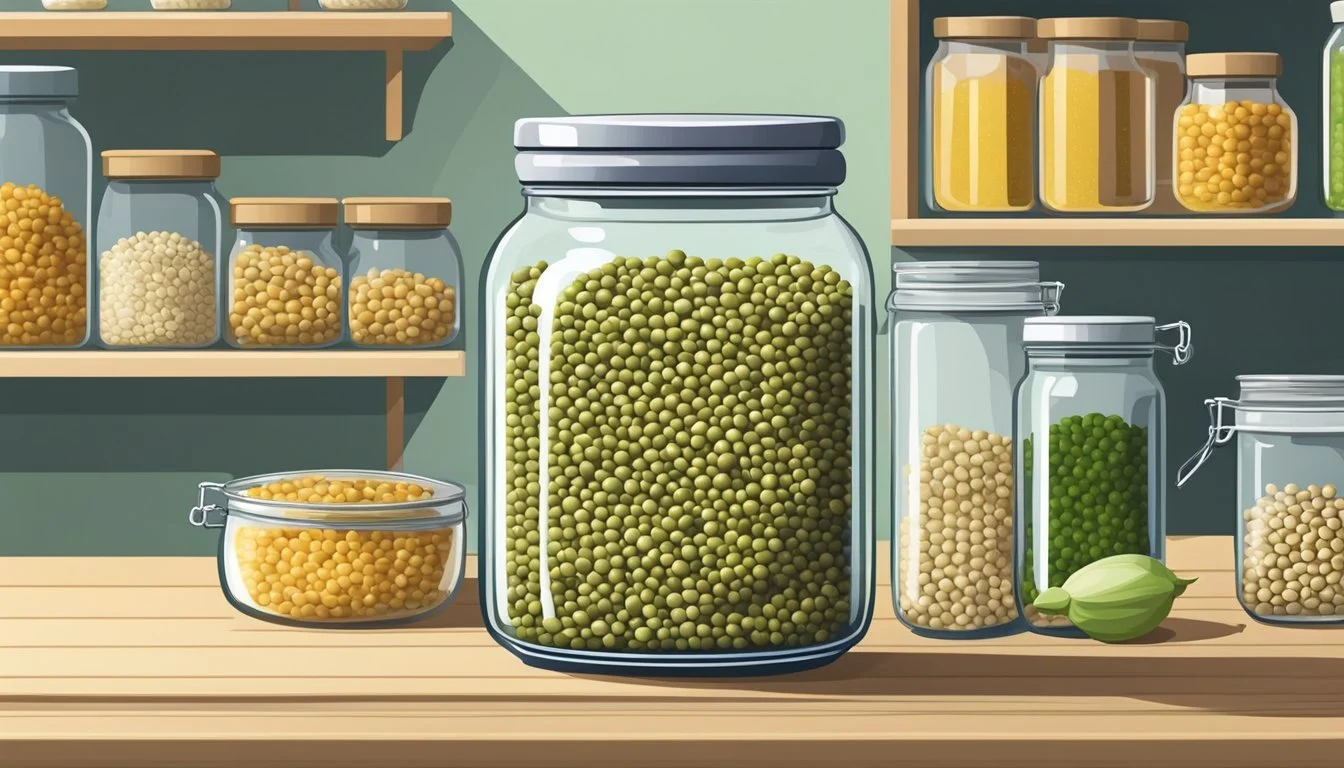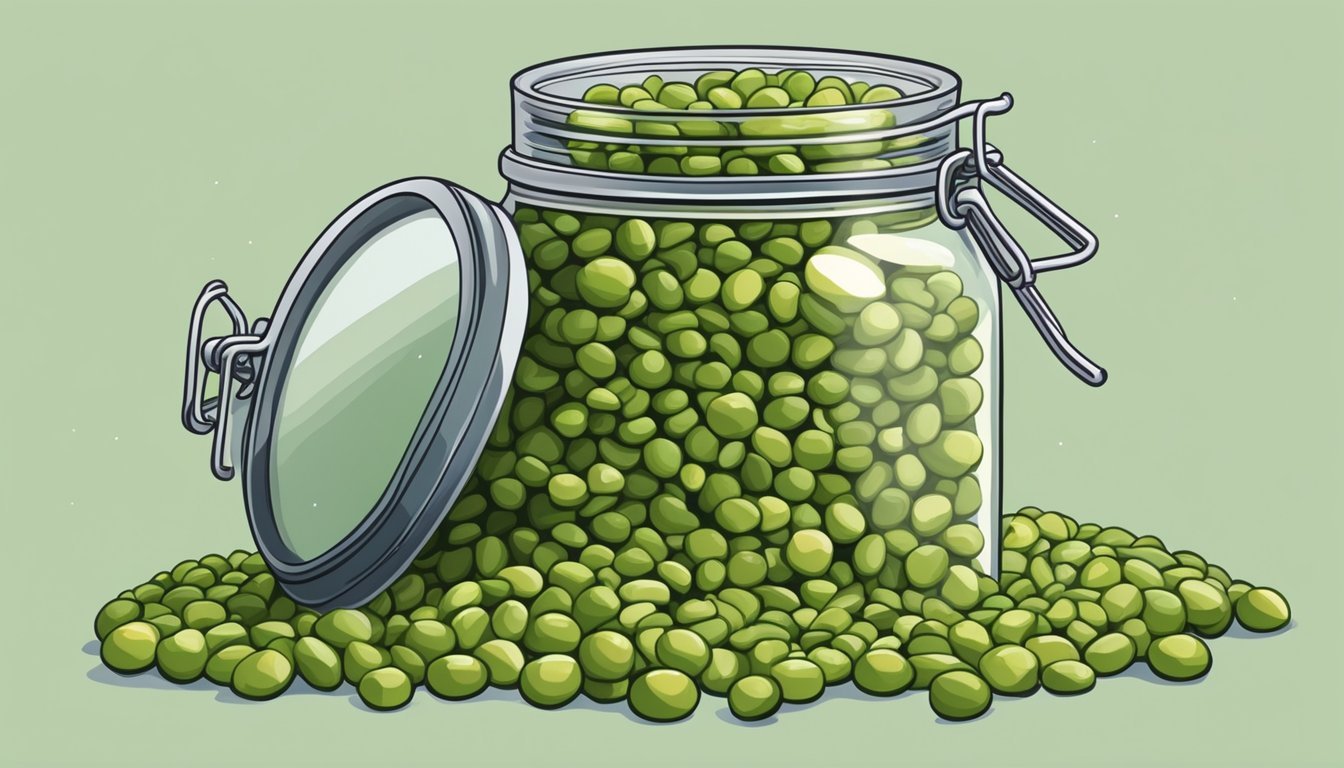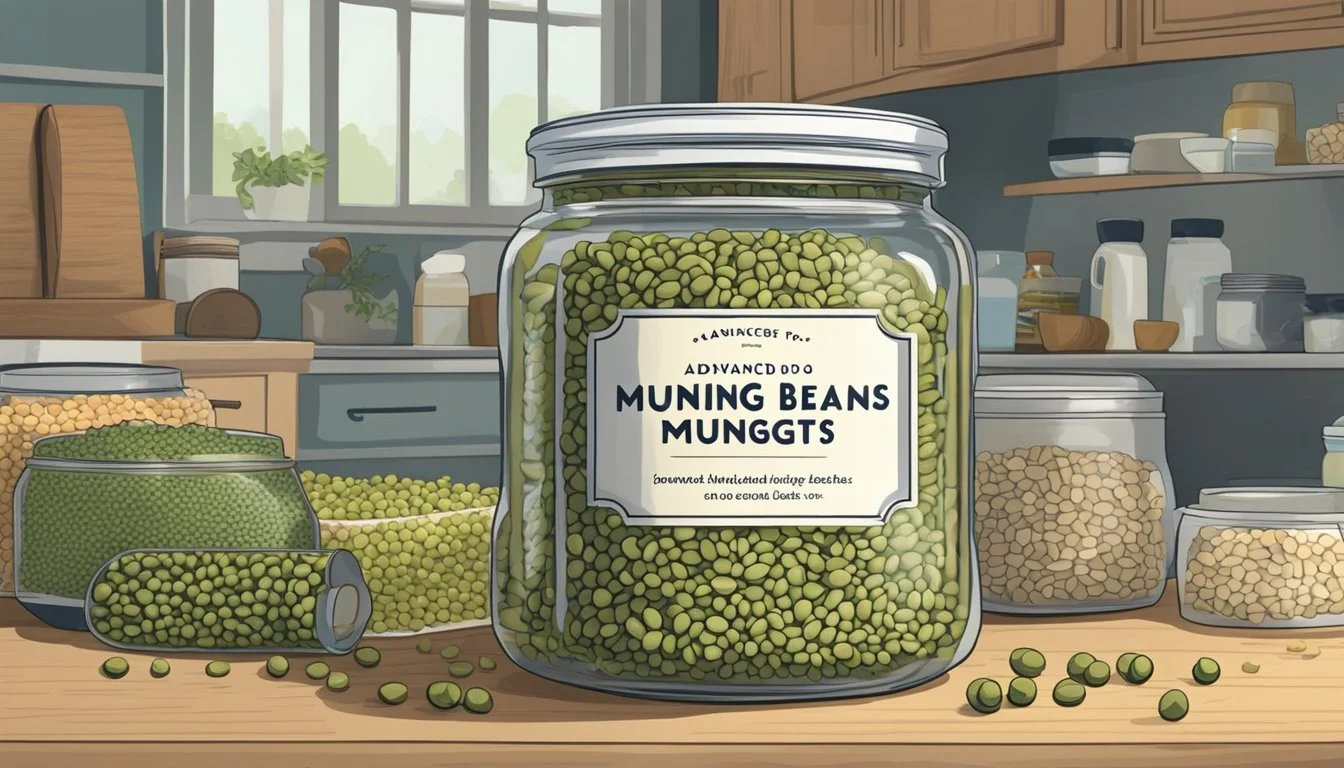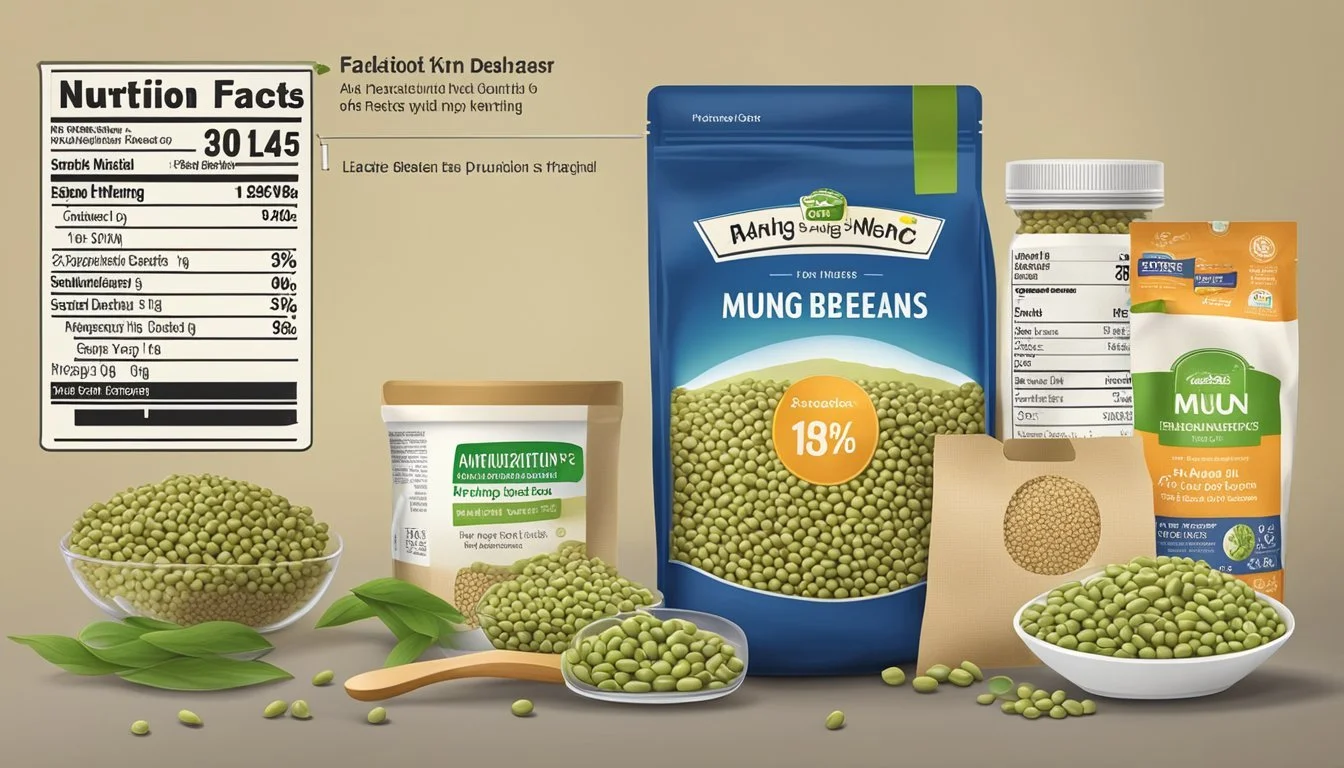How Long Do Mung Beans Last?
Shelf Life and Storage Tips
Mung beans, a staple in many diets around the world, are renowned for their long shelf life and nutritional value. They are an essential ingredient in various dishes, from salads to soups and stews. Uncooked mung beans, when stored properly, can retain their best quality for 1 to 3 years in their original packaging. Factors such as storage conditions—specifically cool, dry places away from direct sunlight—play a crucial role in maintaining their longevity. Even beyond their best-by date, mung beans can remain safe to consume, although they may gradually lose some nutritional value over time.
The stability of mung beans is further evident as they can last for decades when packaged in airtight containers like #10 cans or Mylar bags. However, the texture and flavor may change, with beans becoming harder and taking longer to cook as they age. It is important to check for any signs of spoilage, such as discoloration, mold, and off odors, which indicate that the beans should not be consumed. Properly cooked mung beans can also be stored for later use, lasting about 5 days in the refrigerator when kept in an airtight container and can be frozen for extended shelf life.
Overview of Mung Beans
Mung beans are a nutritious legume packed with vitamins and minerals, extensively used in various culinary traditions for their versatility and health benefits.
Nutritional Profile
Mung beans boast an impressive nutritional profile. They are a remarkable source of plant-based protein, making them a staple in vegan diets. A single cup of cooked mung beans typically contains about 14 grams of protein. They are also low in calories but high in fiber, which aids in digestion and promotes a feeling of fullness. This legume is a treasure trove of essential minerals including potassium, magnesium, phosphorus, zinc, manganese, calcium, and iron, which play vital roles in maintaining bodily functions. Additionally, mung beans are rich in B-complex vitamins that support cellular energy and metabolism.
Nutrient Amount per 1 cup (cooked) Protein 14g Fiber 15.4g Calories 212 Potassium 537mg Magnesium 97mg Phosphorus 200mg Zinc 1.7mg Manganese 0.6mg Calcium 55mg Iron 4mg
Culinary Uses
Mung beans are versatile in the kitchen, lending themselves to a wide array of dishes. They can be found in both sweet and savory recipes in many Asian cuisines, particularly in India, China, Korea, and Thailand. As a starch source, they can be cooked whole, sprouted, or processed into flour. Mung beans are commonly used in soups, stews, salads, and stir-fries. They are also the primary ingredient in dishes like mung bean pancakes and desserts such as mung bean cakes. Their ability to absorb flavors makes them an excellent base for a variety of spices and seasonings.
Storage Fundamentals
When storing mung beans, maintaining their quality depends on controlling environmental factors such as temperature, humidity, air circulation, and light exposure. Adherence to storage fundamentals ensures longevity and preserves the beans' edibility.
Optimal Temperature and Humidity
To maximize the shelf life of mung beans, they should be stored in a cool, dry, and dark place, ideally with a temperature around 60°F (15°C) and a humidity level of less than 60%. Excessive moisture can lead to mold growth and spoilage.
Temperature: 60°F (15°C)
Humidity: <60%
Proper Air Circulation
Mung beans benefit from proper air circulation to prevent moisture buildup. They should be kept in airtight containers to minimize exposure to air, which can lead to oxidation and degradation of quality.
Storage containers: Airtight containers
Light Exposure
Store mung beans away from light since prolonged exposure can degrade their quality. A dark place, such as a pantry or cupboard, is the ideal location to prevent the light from affecting the beans.
Preferred storage location: Pantry or cupboard
Pantry vs. Refrigerator vs. Freezer
Pantry: Mung beans thrive in a pantry setting as long as the area is cool, dry, and dark.
Refrigerator: For short-term storage of cooked mung beans, use an airtight container in the refrigerator, and they will last for about 5 days.
Freezer: Cooked mung beans can be frozen to extend their shelf life. Store in airtight containers or freezer bags for optimal preservation.
Storage comparison:
Pantry: Best for dry mung beans, uncooked
Refrigerator: Good for cooked mung beans, up to 5 days
Freezer: Suitable for extending the life of cooked mung beans
Preparation and Cooking
In preparing mung beans, one must consider the intricacies of rinsing, soaking, cooking times, and recipe integration to ensure proper texture and flavor, especially when these legumes are used in soups, stews, salads, and curries.
Rinsing and Soaking
Before cooking, mung beans should be thoroughly rinsed under cold water to remove any dirt or debris. While they generally do not require soaking due to their small size and soft texture, for some recipes, such as in the case of salads or if a quicker cooking time is desired, soaking the beans can be beneficial.
Boiling and Cooking Times
For boiling mung beans, a standard method is to use three parts of water to one part of beans. Bring the water to a boil, add the beans, and then simmer. The cooking times can vary:
Whole mung beans: Approximately 45 minutes until tender.
Split mung beans: About 25 minutes to cook.
Remember, no soaking is required for mung beans, which sets them apart from other legumes like chickpeas.
Recipe Integration
Mung beans are a versatile ingredient that can elevate various dishes. They are commonly integrated into:
Soups and Stews: Mung beans add heartiness and nutrition.
Salads: Cooked and cooled beans provide a crunchy, protein-rich component.
Curries: The beans absorb the aromatic spices, enhancing the dish's flavor profile.
Shelf Life and Quality Maintenance
Storing mung beans properly significantly extends their shelf life, ensuring they maintain their quality over time. Both dried and cooked mung beans demand specific storage conditions to prevent spoilage and deterioration.
Dried Mung Beans
Dried mung beans have a considerable shelf life. If stored in a cool, dry place away from direct sunlight, they can last for up to 1-3 years in their original packaging. For extended longevity, storing them in oxygen-free containers like #10 cans or Mylar bags can preserve their quality for 20-30 years. Quality deteriorates gradually over time, so older beans may take longer to cook and could be less flavorful.
Shelf Life: Up to 3 years in packaging, 20-30 years in optimal storage
Quality Maintenance: Store in cool, dry places; use airtight containers for long-term storage
Cooked Mung Beans
Once mung beans are cooked, their shelf life reduces significantly. They should be refrigerated within two hours of cooking and can last in the fridge for 3-5 days. To extend the life further, they can be frozen where they maintain quality for up to 6 months.
Shelf Life (Refrigerated): 3-5 days after cooking
Shelf Life (Frozen): Up to 6 months
Quality Maintenance: Refrigerate promptly and keep in an airtight container
Signs of Spoilage
There are clear indicators when mung beans have gone bad. For dried beans, any signs of mold or an off odor signify spoilage. They may also have a sour smell or appear discolored. Cooked mung beans spoil quicker and will exhibit off odors, slimy texture, or a sour taste. It's crucial to discard beans if these signs are apparent, despite the expiration date stated on packaging, to avoid consuming spoiled food.
Dried Beans: Mold, odd odors, discoloration
Cooked Mung Beans: Off odors, sliminess, sour taste
Safety and Contamination Prevention
Maintaining the safety and quality of dried mung beans involves vigilant measures to avert infestation, mold, and bacteria growth. When stored improperly, mung beans are vulnerable to contaminants that can lead to food poisoning.
Infestation and Pests
Grains and legumes can attract insects and pests that not only consume the product but also spoil it with their waste. To protect mung beans from pests:
Store in airtight containers.
Use glass or metal containers as pests can gnaw through plastic.
Regularly inspect for signs of infestation, such as small holes or webbing.
Preventing Mold and Bacteria Growth
Mold and bacteria thrive in humid environments. To prevent mold and bacterial contamination in mung beans:
Keep beans in a cool, dry place.
Ensure the storage area is well-ventilated.
Use desiccants to absorb any excess moisture.
Discard any beans that appear slimy, discolored, or have a musty odor, as these are signs of spoilage.
Discarding Unfit Beans
Assessing when mung beans are unfit for consumption is crucial for food safety. Beans should be discarded if:
There is evidence of pest infestation.
Mold growth is visible.
The beans emit an unusual or off odor.
They have been stored improperly or for an extended period beyond recommended durations.
Advanced Tips for Longevity
To maximize the shelf life of mung beans, proper storage techniques are crucial. Advanced methods like freezing, vacuum sealing, or using desiccants can greatly extend their longevity and preserve their nutritive value.
Freezing Techniques
Freezing mung beans can help retain their nutritive value for extended periods. To freeze, one should first rinse and dry the beans thoroughly to prevent ice crystal formation. Store the beans in airtight containers or freezer bags to minimize exposure to oxygen, which can lead to freezer burn. Label the containers with the date of freezing to keep track of their storage time.
Use of Desiccants or Vacuum Sealing
Using desiccants or vacuum sealing are effective ways to extend the beans' shelf life by removing moisture and air:
Desiccants: Include silica gel packets in the storage container to absorb excess moisture, which can lead to mold and spoilage.
Vacuum Sealing: Vacuum seal the beans in airtight bags to eliminate oxygen, preventing oxidation and ensuring that the beans maintain their nutritive value.
Rotational Storage
Employing a rotational storage strategy ensures that beans are used in the order they were stored, preserving their quality over time. Store beans in a cool, dry place, and regularly rotate your stock by using the oldest beans first. Remember to replenish your storage with fresh beans after use, maintaining a first-in, first-out system. This method also ensures regular inspection of your stock, allowing you to consume the beans while they still offer optimal nutritive value and before they require measures to soften, which older beans may need.
Understanding Food Labels
Food labels provide essential information about the shelf life and quality of food products. Learning to decipher these details helps consumers make informed decisions about the safety and freshness of their food.
Reading Expiration Dates
Expiration dates on food products, such as mung beans, are provided to ensure that consumers are aware of the food's shelf life. It is crucial to understand that these dates are often presented in different terminologies:
"Best by": This suggests when the product is likely to be at its peak quality.
"Use by": This date is the last day that the manufacturer guarantees the product’s optimal quality and safety.
It's important to note that the U.S. Department of Agriculture (USDA) advises that many products can be safely consumed past their expiration if properly stored.
Product Grading and Standards
The USDA provides grading standards to classify the quality of products, including dried beans like mung beans. These standards refer to attributes such as size, color, and purity. For example, mung beans might be graded based on the absence of defects or contaminants. Here are some specifics:
Grade A (U.S. Fancy): Superior quality beans that are uniform in size and free of deformities.
Grade B (U.S. No. 1): This is the most common grade for consumer products; mung beans with minor imperfections may fall into this category.
Grade C (U.S. No. 2): These beans are of lesser quality, with more noticeable defects allowed.
Researchers at institutions like Utah State University provide further guidance on understanding food labels and properly storing food to extend its shelf life. For dried mung beans, proper storage is key to maintaining their usability beyond the labeled expiration date.
Health and Diet Considerations
When considering mung beans as part of a diet, one should be aware of their nutritional value and how they can benefit specific dietary needs, such as those of vegans and vegetarians.
Mung Beans in a Balanced Diet
Mung beans, rich in nutrients, make a valuable addition to a balanced diet. They are a good source of plant-based protein, essential for muscle building and repair. The legume also provides dietary fiber, both soluble and insoluble, which supports healthy digestion and can contribute to maintaining a healthy gut. Additionally, mung beans boast a variety of minerals, including copper, which is important for maintaining healthy blood vessels, nerves, immune system, and bones.
Nutritional Highlights of Mung Beans:
High in protein: Important for bodily functions.
Rich in fiber: Supports digestive health.
Contains minerals: Such as copper, for overall well-being.
Benefits for Vegans and Vegetarians
For vegans and vegetarians, mung beans are particularly beneficial because they serve as an important source of protein and other nutrients that might be more challenging to obtain from a plant-based diet. The protein present in mung beans is often crucial for replacing meats and dairy products, offering a comprehensive amino acid profile. Mung beans can be easily incorporated into various meals, increasing consumption of beneficial nutrients necessary for a wholesome vegan or vegetarian diet.
Vegan and Vegetarian Dietary Benefits:
Plant-based protein: A crucial component for those avoiding animal products.
Soluble fiber: Aids in cholesterol management and blood sugar stability.
Copper: An essential mineral for energy production and iron absorption.
These attributes make mung beans an excellent food choice for individuals seeking to optimize their health through diet.








